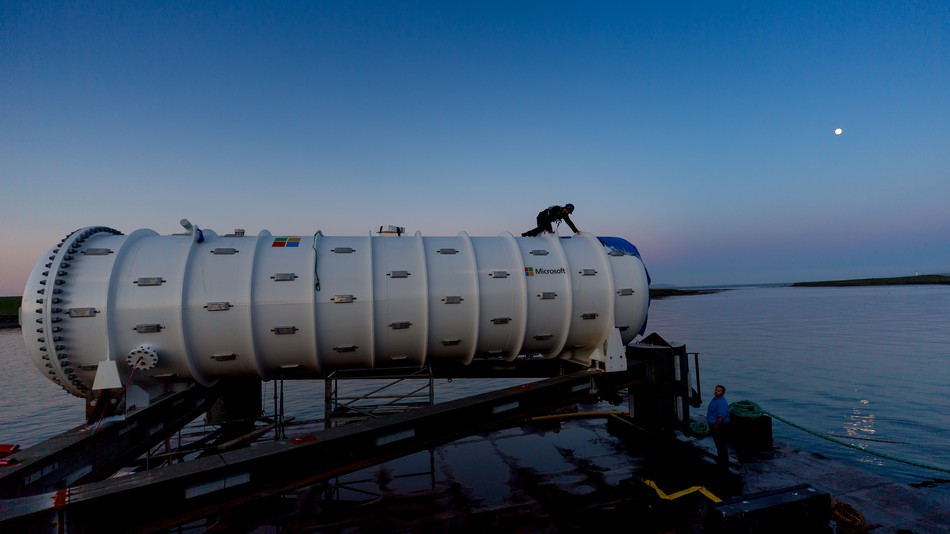
Microsoft’s undersea data-center project to bring cloud servers closer to people has entered new phase.
Microsoft just sent its first self-sufficient, waterproof data center to the bottom of the ocean floor near the Orkney Islands in Scotland, the company announced on Tuesday. About the size of a shipping container, the tubular data center holds 12 racks loaded with 864 servers and is attached to a large triangular weight that anchors it to the seabed over 100 feet beneath the ocean surface.
The deployment of the data center represents the culmination of a nearly four year research effort code-named Project Natick, which aimed to develop rapidly deployable data centers that can support cloud computing services near major cities.
In addition to cutting down the amount of time needed to create a data center on land from about 2 years to around 90 days, the submarine data center has the added benefit of natural cooling from the ocean, eliminating one of the biggest costs of running a data center on land. The bottom of the ocean is also isolated from many disasters that could affect land based data centers, such as war or hurricanes, although Microsoft did not mention how difficult it would be to make repairs to the servers inside the container should they malfunction.
The Orkney Islands was a strategic choice for the first data center since the islands are also testing experimental renewable energy projects. The islands are home of the European Marine Energy Center, which takes advantage of the naturally turbulent water to harvest tidal energy in addition to a substantial amount of wind energy generated on land to create 100 percent renewable energy for the island. The EMEC generates more than enough energy for the islands’ 10,000 residents and a cable linked to the Orkney Island grid powers Microsoft’s underwater data center.
The move is part of a larger push at Microsoft to become a leader in cloud computing, which is at the heart of most consumer-facing web applications you use on a day to day basis. Considering that over half of the world’s population lives within 120 miles of the coast, submarine data centers can ensure that major cities are always close to the physical servers that comprise the cloud.
Microsoft already runs more than 100 data centers around the world for its Azure cloud computing platform. Project Natick may allow the company to rapidly deploy dozens of other data centers in the coming years, but for now, Microsoft says its first submarine data center is an applied research project meant to determine the viability deploying the data centers at scale. It will monitor the container for the next year to monitor its performance before deploying another.
“We are learning about disk failures, about rack design, about the mechanical engineering of cooling systems and those things will feedback into our normal datacenters,” Peter Lee, the leader of Microsofts New Experiences and Technologies group said in a statement. “When you go for a moonshot, you might not ever get to the moon. It is great if you do, but, regardless, you learn a lot.”













